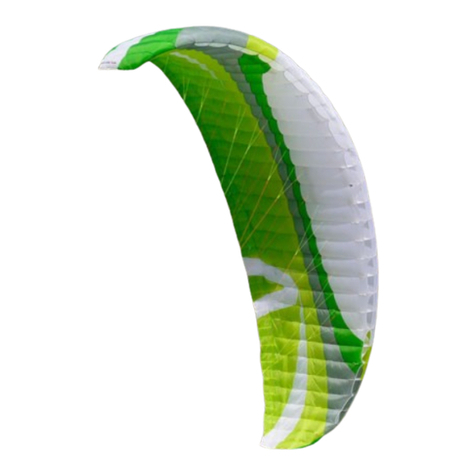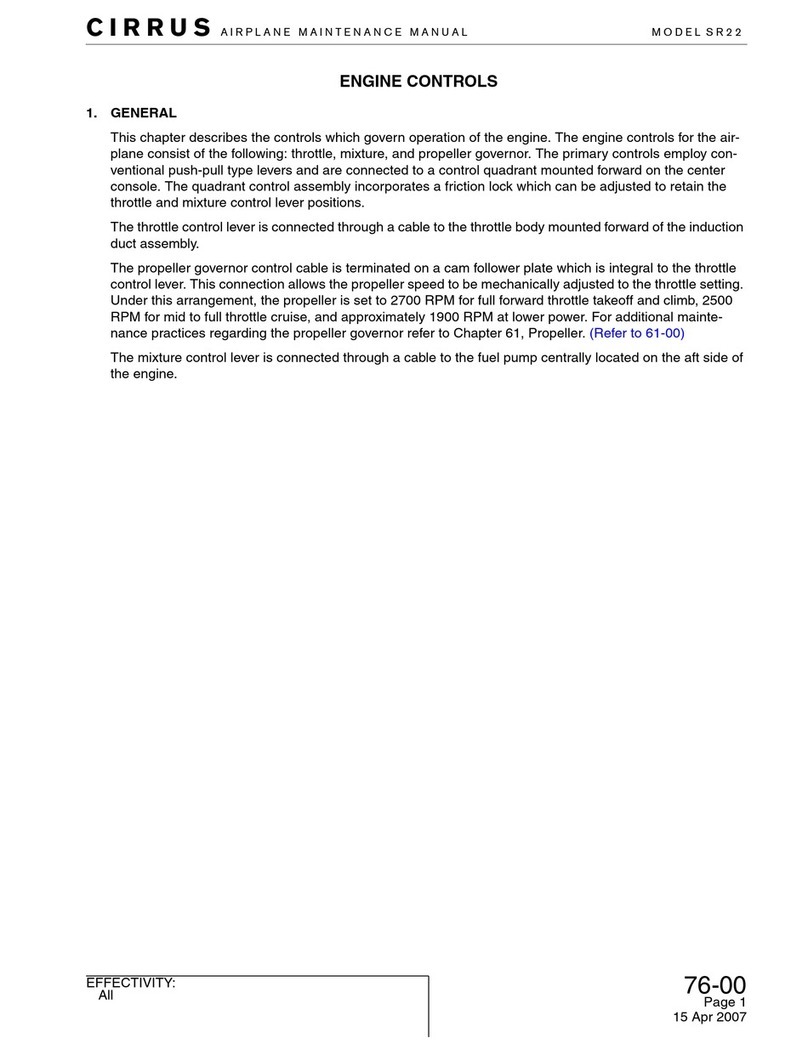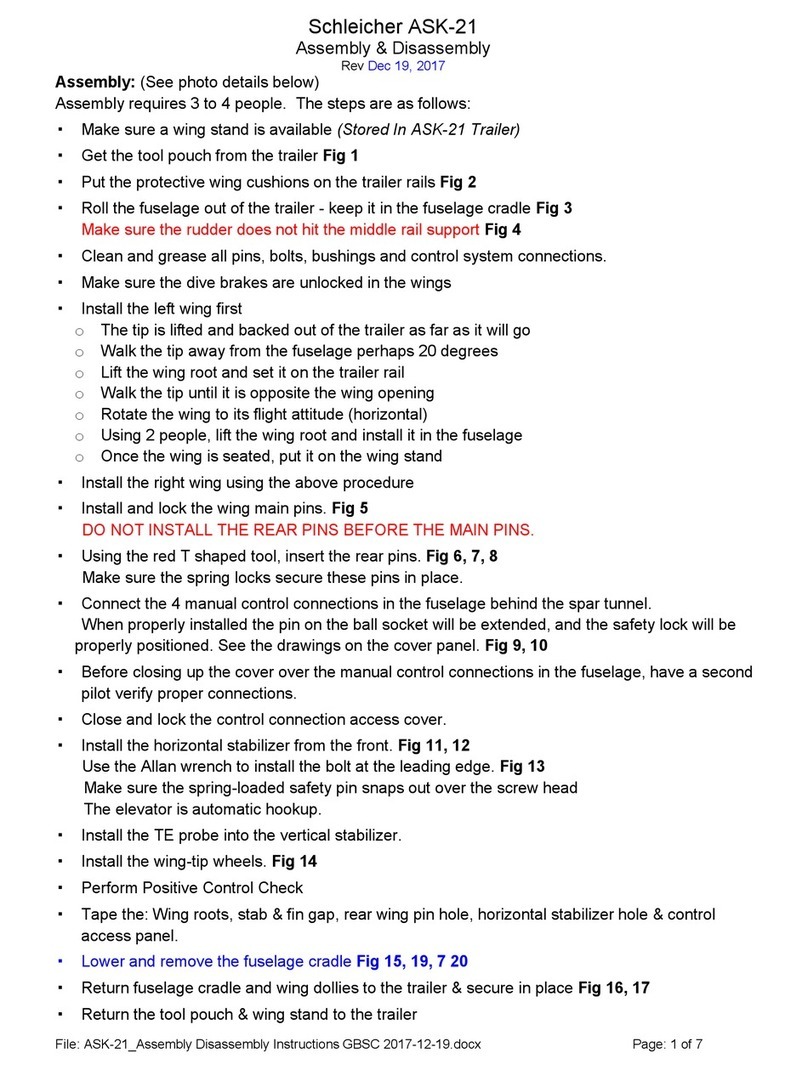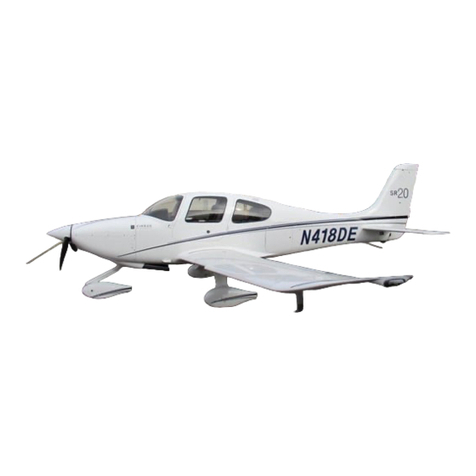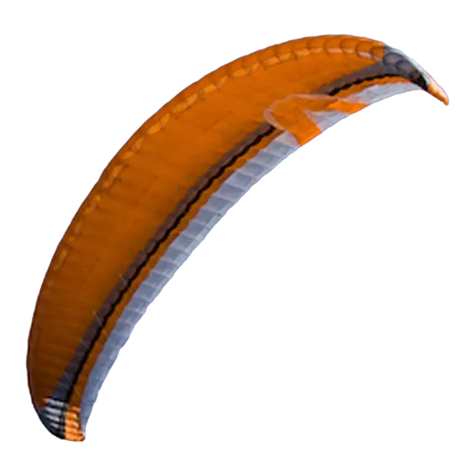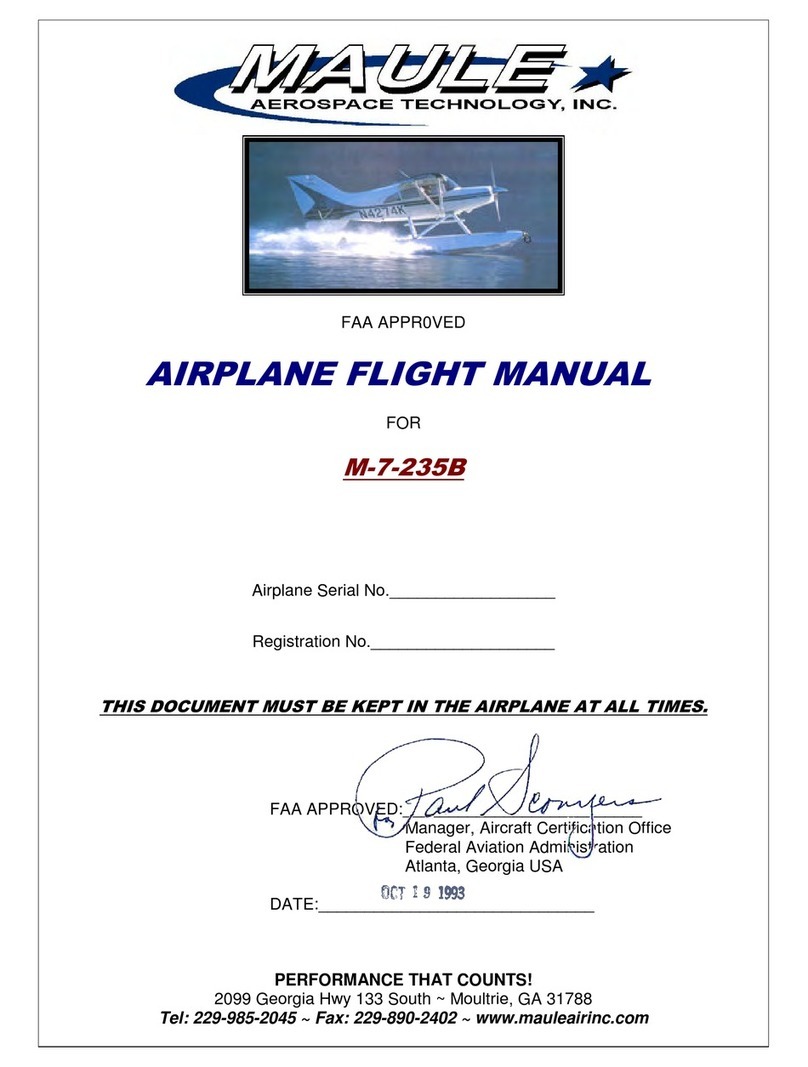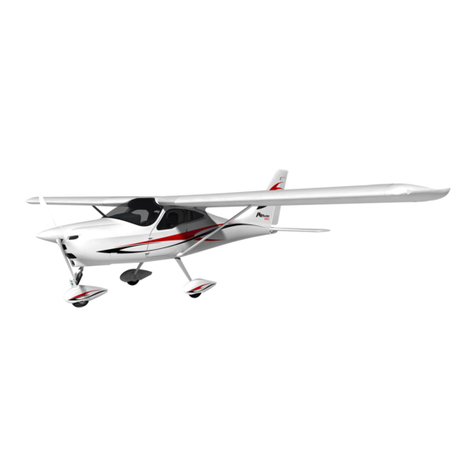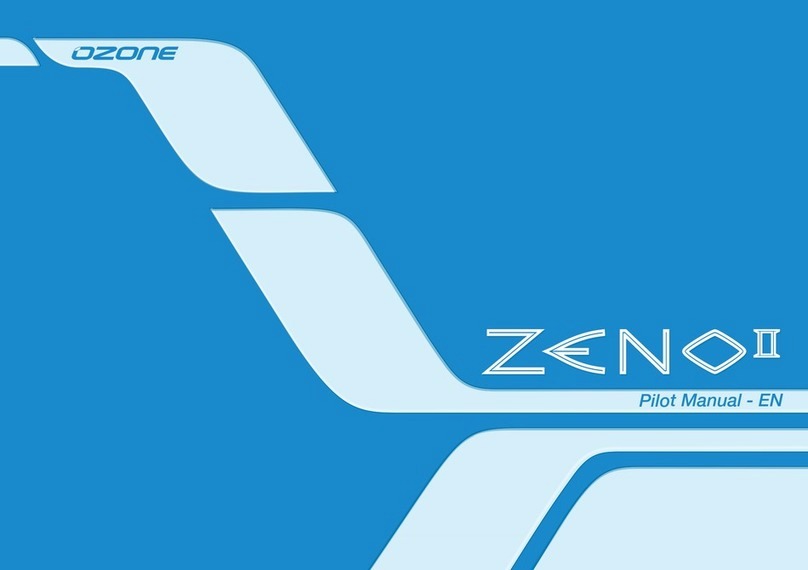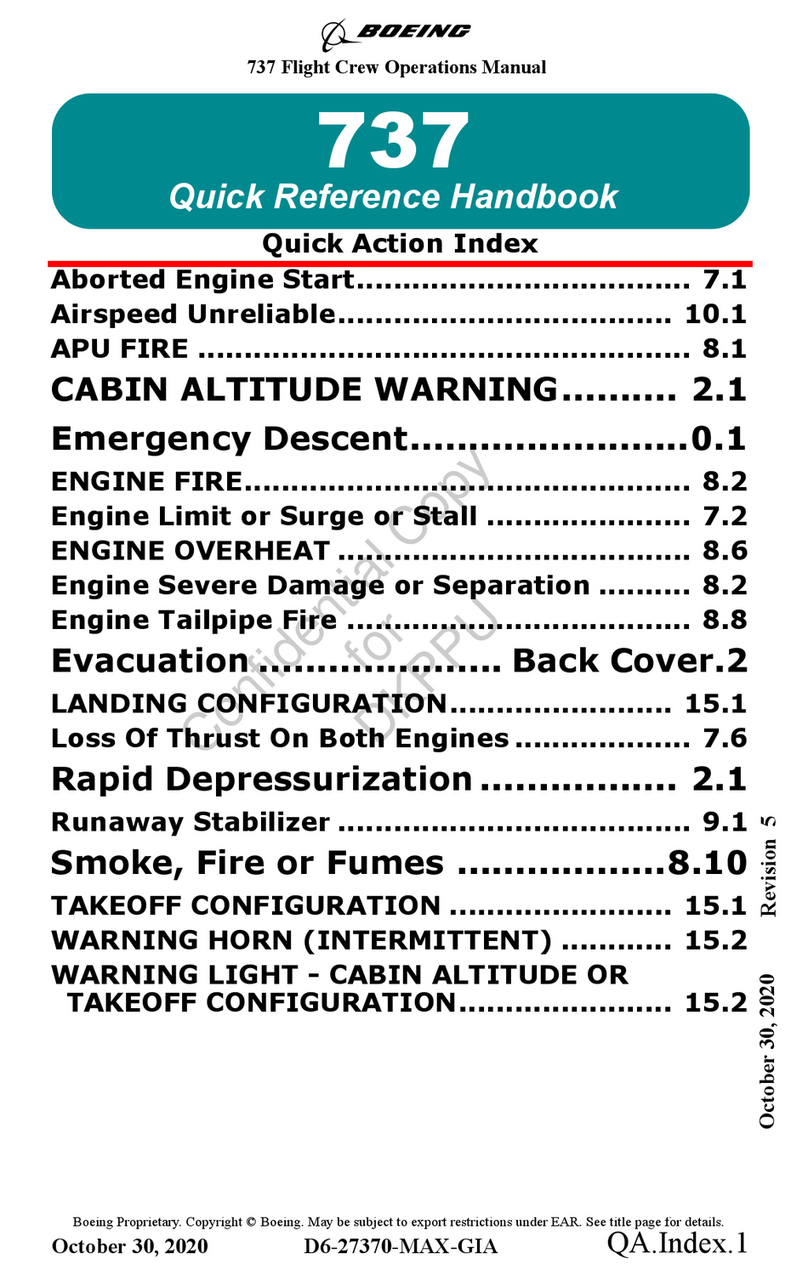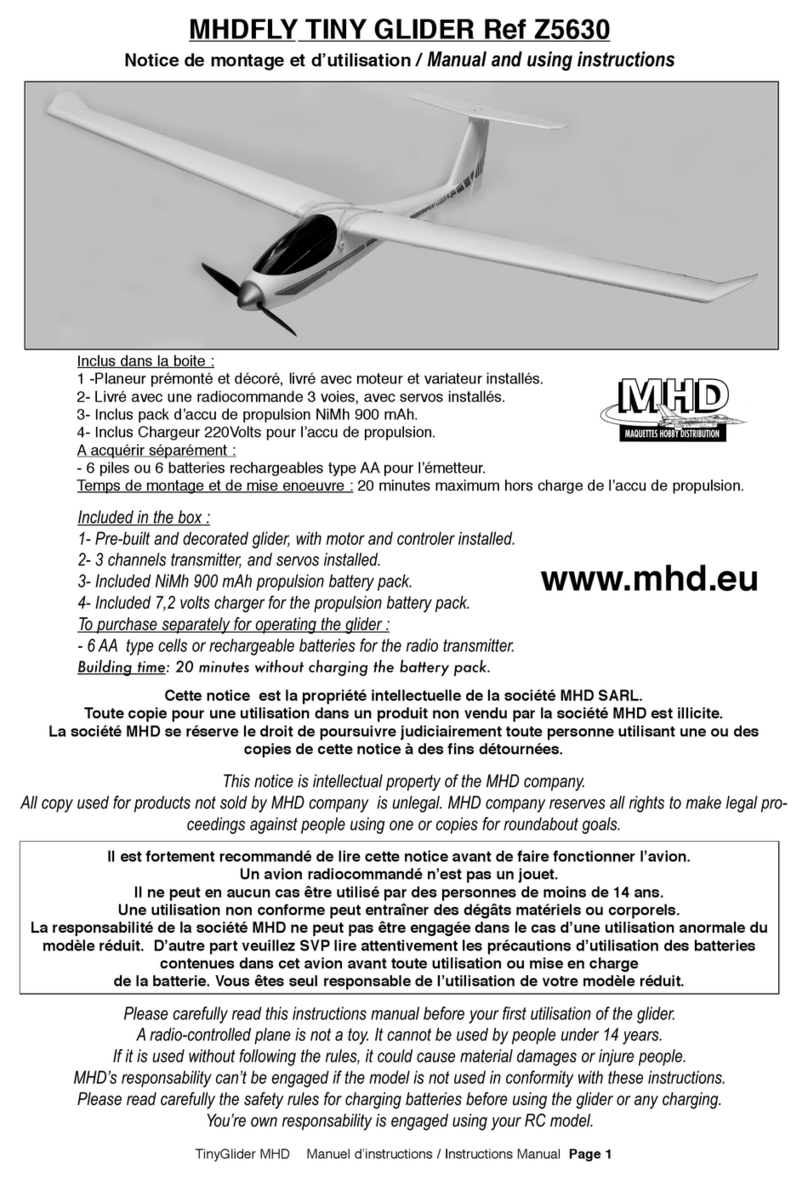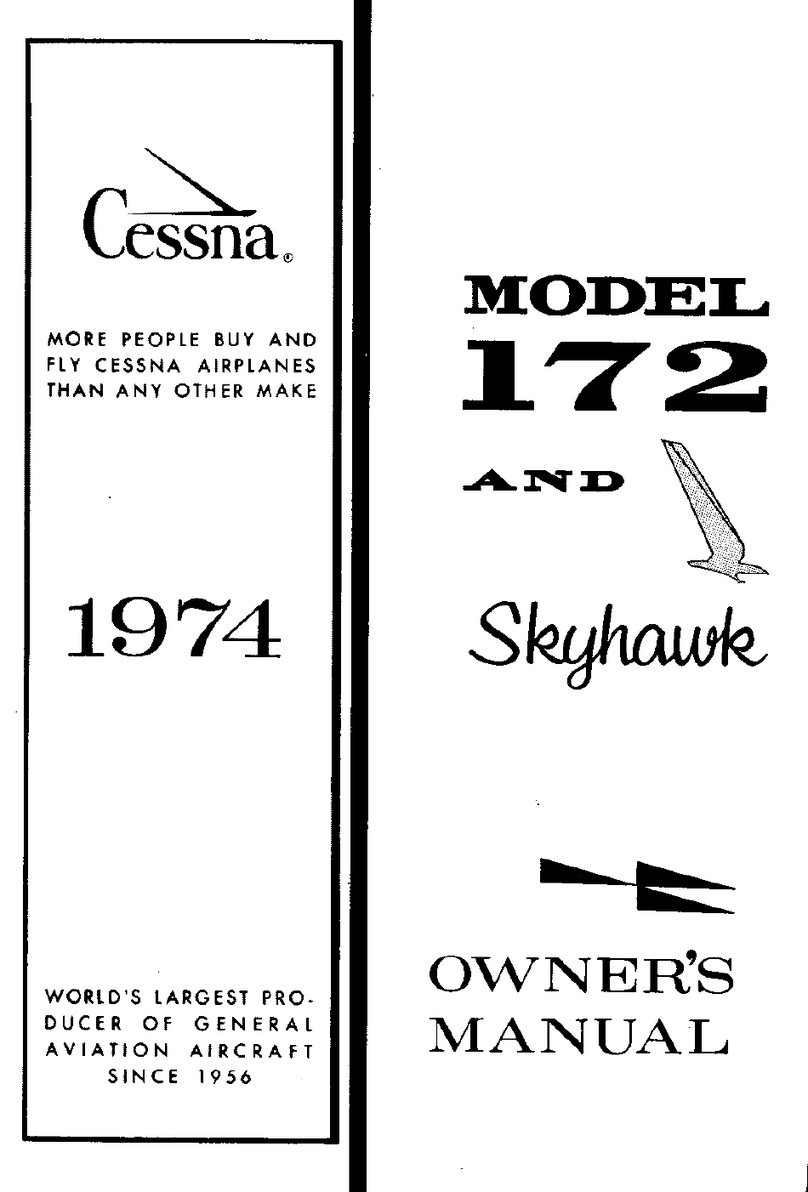Independence paragliding Trigon User manual

Owner´s manual Fassung 1.0 vom 20.07.2018
Rescue system
Trigon
Fly market GmbH & Co. KG
Am Schönebach 3
D-87637 Eisenberg
Tel.: +49-8364-9833-0
Fax: +49-8364-9833-33
Mail: [email protected]

Inhaltsverzeichnis
1. Technical Data
2. Intended use
3. Operating limits
4. Necessary documentation
5. Mode of operation
6. usage of steering lines
7. Control and inspection of the parachute
8. Behaviour if damages are noticed
9. Storage
10. Maintanance
11. Cleaning
12. Repairs
13. Nature- and environment-friendly behaviour
14. Environmentally compatible waste disposal
15. Spare parts / changeable parts
16. Structure of the parachute
17. Packing the parachute
18. Mounting in a container
19. Mounting / integration to a harness
20. Specialities for winch towing
21. Preflight check
Warning
Itisnotallowedtousethisrescueparachuteforskydiving!
AccordingEN12491:Notsuitableforuseatspeedsinexcessof32m/s(115km/h)
The paragliding rescue systems of the Trigon series are certified according EN 12491 (European standard) and LTF
91/09(Germantypeapproval).
The manufacturer can not be made liable for any possible damages to persons or material damages, which may result
fromthisrescueparachutesinanyway.
1.TECHNICALDATA
Typeofrescueparachute: paraglidingrescuesystem Trigon100,Trigon125
Manufacturer: FlymarketGmbH&Co.KG
AmSchönebach3
D-87637Eisenberg
Tel.+49-8364-9833-0
rescuesystem:
Weightoftherescuesystem(kg):
Surface(m²):
Numberofpanels:
Totallengthpacked:
(Bridletopackingloops)(m)
Minandmax.loadnotsteered(kg)
Minandmaxloadifsteered(kg)
SeePoint6.
Sinkrateatmax.load
VolumeinMilliliter
(withoutbridle)
Trigon 100
1,29
32
8,90
55 -100
55 -85
<5,5 m/s
3800
16
Trigon 125
1,45
37
9,40
70 - 125
70 - 100
<5,5 m/s
4300
16
2 3

Inhaltsverzeichnis
1. Technical Data
2. Intended use
3. Operating limits
4. Necessary documentation
5. Mode of operation
6. usage of steering lines
7. Control and inspection of the parachute
8. Behaviour if damages are noticed
9. Storage
10. Maintanance
11. Cleaning
12. Repairs
13. Nature- and environment-friendly behaviour
14. Environmentally compatible waste disposal
15. Spare parts / changeable parts
16. Structure of the parachute
17. Packing the parachute
18. Mounting in a container
19. Mounting / integration to a harness
20. Specialities for winch towing
21. Preflight check
Warning
Itisnotallowedtousethisrescueparachuteforskydiving!
AccordingEN12491:Notsuitableforuseatspeedsinexcessof32m/s(115km/h)
The paragliding rescue systems of the Trigon series are certified according EN 12491 (European standard) and LTF
91/09(Germantypeapproval).
The manufacturer can not be made liable for any possible damages to persons or material damages, which may result
fromthisrescueparachutesinanyway.
1.TECHNICALDATA
Typeofrescueparachute: paraglidingrescuesystem Trigon100,Trigon125
Manufacturer: FlymarketGmbH&Co.KG
AmSchönebach3
D-87637Eisenberg
Tel.+49-8364-9833-0
rescuesystem:
Weightoftherescuesystem(kg):
Surface(m²):
Numberofpanels:
Totallengthpacked:
(Bridletopackingloops)(m)
Minandmax.loadnotsteered(kg)
Minandmaxloadifsteered(kg)
SeePoint6.
Sinkrateatmax.load
VolumeinMilliliter
(withoutbridle)
Trigon 100
1,29
32
8,90
55 -100
55 -85
<5,5 m/s
3800
16
Trigon 125
1,45
37
9,40
70 - 125
70 - 100
<5,5 m/s
4300
16
2 3

2.Intendeduse
Manuallyreleased,steerablerescuesystemforsingleseatedparaglidersinanemergencysituationwhileflying.
3.Operatinglimits
Maximumspeedforusage:115km/h(32m/s)
Interval for repacking: 12 month, then the rescue system has to be repacked and this repacking has to be recorded in the
“Repackandinspectionlogbook”.
Duetotheeffectofwater,sand,saltorotherenvironmentalinfluencesmayreducetherepackinterval.
Interval of inspection: 24 month, then a complete inspection of the rescue system is necessary. The inspection has to be
recordedinthe“Repackandinspectionlogbook”.
Operational lifespan of parachute: 10 years. The lifespan can be extended for 2 more years if the rescue parachute is
inspectedyearlyduringthislasttwoyearsatthemanufacturer.Sothetotalmax.possiblelifespanis12years.
4.Necessarydocumentation
a)Owner´smanual
b)Repackandinspectionlogbook(withrecordedrepackandinspectionjobs)
5.Modeofoperation
During an emergency situation while flying the pilot pulls at the release handle with a firm tug. Thereby the outer container
opensandthedeploymentbagisreleased.Afterthattherescueparachutepackage(whichisstillpackedinit´sdeployment
bag)have tobethrownwithadynamicmove intothefree airspace.That meanstherelease handlehavetobethrown away
togetherwiththedeploymentbag!!!
The deployment bag and the bridle are designed in a way which releases the lines and canopy of the parachute not before
theparachutepackageisthrownaway.
Thispreventsanunintentionalortooearlyopeningoftherescueparachute.Thisisminimizingthedangeroftanglingupwith
the paraglider / hang glider / pilot or the reason which maybe causal for the emergency case (e.g. collision with another
paraglider).
Moreover the maximum throwing speed of the deployment bag should be reached when the deployment bag leaves the
pilothand.
Ingeneral:Thefastertherescuesystempackageisthrownaway,thequickerthesystemwillopen.
After the throw the deployment bag opens and releases lines and canopy. The powerful throw and/or the airstream
stretchesthelinesandcanopynowtherescueparachutesopens.
Whentherescueparachuteisopenedcompletely,youfirsthavetocheckthealtitudeaboveground.
If you have still enough height you should try to make the paraglider unable to fly according to the doctrine to avoid an V-
positionoftheparagliderandtherescuesystem.
Ifyoudonothaveenoughheightanymore,justfocusonthegroundandprepareyourselfforalandingfall.
6.Usageofsteeringlines
TheTrigonisequippedwithasystemthatpre-brakesthecanopyafteropeningbyshortenedsteeringlineswhichpreventsa
forwardspeed.
Theuseofthesteeringlinesrequiresafewconditionsthatmustallbemet:
After the rescue system has successfully opened in the pre-braked condition and is stable above the pilot, a sufficient
altitudemustbepresent.Inaddition,theparaglidermustbeinastable,incapableflyingposition(bestis,iftheparaglidergot
disconnectedbyaquickoutrelease).
If these conditions are all met, the pre-braked steering lines can be unlocked by pulling both control handles symmetrically
down.Therescuesystempicksupforwardspeedbydecreasingtheuseofthebrake.
Thecontrol handlesare attachedtothe rightandleftofthe bridle,rightabove thesuspension point.The steeringisworking
byincreasingthedragofthecanopy,sameasonaparaglider,butwithaslowanddampedreaction.
Attention:
Whenthepre-brakingisreleased,themax.takeoffweightisreduced(see1.Technicaldata).
Iftheparagliderisnotinareliable,incapableflyingpositionorseparatedthepre-brakedsteeringlinesmustbenot
releasedandused.IfreleasedinthisconditiontherewouldbeaveryhighpossibilityofaV-positionofparagliderto
rescue system (down plane), in combination with very high and dangerous sink rate and a without possibility of
steering.
The behaviour of the Trigon with non-activated steering lines is comparable with a conventional, not steerable
rescuesystem.
Withashouldersuspensionontheharness,dependingonthepositionofthesuspensionpoints,itcanbedifficulttoturnthe
headand seethe controlhandles.Veryoften, theserescuesystem suspensionare mountedonthe harnessfar intheback
areaand theposition ofthecontrolhandlescan thereforeonly befelt. Werecommendto testthe positionofthehandlesin
advancebyasuitablesimulation(hangintheharnessontheshouldersuspension).
The use of a front container is possible, but the bridle of the rescue system must be extended for the use on the main
carabiners.Otherwisethecontrolhandlesaremountedtoolowandasteeringisnotguaranteed.Theextensionisavailable
asanaccessory.
7.
A parachute must be controlled by a registered packer before it is repacked. After being opened during an emergency
rescue,theparachutemustbeinspectedbythemanufactureroraworkshopwhichisauthorizedbythemanufacturer.
A repackedparachuteshouldundergoareleasetestaftermountedintheoutercontainerorharness.Thisensuresthatthe
openingforcetoreleaseisbetween2kpand7kp.
Bythe firstassemblingof therescuesystem withanouter containerorharness withanintegrated rescuesystemcontainer
thefunctionalitymustbecheckedbyanexpertandmustbeconfirmedintheinspectionlogbook.
The inspection required after 24 months includes a complete visual examination of all components (cloth, seams, lines,
bridlesetc)fordamageandwear.Foraninspectionsuitabletoolsmustbeavailable(lighttable,repacktoolsetc).
Allworkmustbedocumentedappropriately.
8.Behaviourifdamagesarenoticed
If you notice any damage at the rescue parachute, which may affect the airworthy condition of the recue parachute, you
havetosendtherescueparachuteforinspection/repairtothemanufacturer.
Also, ifyouarenotsureabouttheairworthyconditioninanyway,youhavetosendtheparachutetothemanufacturer.
Attention:Chemicals,detergents, insects,mouldstainsor thelike canhavethesame negativeeffectstothestrength ofthe
partsasmechanicalinfluences.
9.Storage
Oil,grease,acidandpaintshouldnotbestoredneartheparachute.Thestoragespaceshouldbedry.Parachuteswhichwill
notbeusedforalongperiodshouldbeopenedandthecanopylooselyrolledandstoredinapermeablebag.
Avoidunnecessaryhightemperatureabove60°C(e.ginaparkingcar)!
10.Maintenance
Thelifespan andconditiondependslargely uponhowcarefully youhandleand maintainyourparachute.Out ofthisreason
werecommendtocontroltheparachuteregular,atthelatestifitisrepacked,ifthereareanywearsordamages.
Duringnormaluseyouhavetotakecareofthefollowingpoints:
If the parachute got wet, you have to open it and dry it at a well ventilated place as soon as possible (but avoid direct
sunlight!)Thefastdryingisimportanttoavoidmouldstains.Aftertheparachuteiscompletedryitcanberepacked.
Iftheparachuteisstrainedmorethannormal(forexample:acardroveovertheharnessinwhichtheparachuteisplaced,or
itmaybeisdamagedbyasharpobject,oranyotherpossibledamage),youhavetosendtheparachutetothemanufacturer
tocheckit.
Avoidcontactwithsaltwater,acidsorotheraggressivesubstances!
Alsoavoidunnecessaryexposuretosunlight,causetheUVraysmaydamagethemolecularstructureofthematerial.
11.Cleaning
Adirtycanopyandcontainercanbecarefullycleanedwithclearwaterandasoftsponge.
Attention: Never use detergents, chemicals, brushes or hard sponges to clean the parachute! Also a cleaning in the
washingmaschineisnotallowed.
Iftherescueparachute getsincontact withsaltwater,youhaveto washitwith freshwater.Atoooftencleaning accelerates
theageingofthesystem.
ControlandInspectionoftheparachute
45

2.Intendeduse
Manuallyreleased,steerablerescuesystemforsingleseatedparaglidersinanemergencysituationwhileflying.
3.Operatinglimits
Maximumspeedforusage:115km/h(32m/s)
Interval for repacking: 12 month, then the rescue system has to be repacked and this repacking has to be recorded in the
“Repackandinspectionlogbook”.
Duetotheeffectofwater,sand,saltorotherenvironmentalinfluencesmayreducetherepackinterval.
Interval of inspection: 24 month, then a complete inspection of the rescue system is necessary. The inspection has to be
recordedinthe“Repackandinspectionlogbook”.
Operational lifespan of parachute: 10 years. The lifespan can be extended for 2 more years if the rescue parachute is
inspectedyearlyduringthislasttwoyearsatthemanufacturer.Sothetotalmax.possiblelifespanis12years.
4.Necessarydocumentation
a)Owner´smanual
b)Repackandinspectionlogbook(withrecordedrepackandinspectionjobs)
5.Modeofoperation
During an emergency situation while flying the pilot pulls at the release handle with a firm tug. Thereby the outer container
opensandthedeploymentbagisreleased.Afterthattherescueparachutepackage(whichisstillpackedinit´sdeployment
bag)have tobethrownwithadynamicmove intothefree airspace.That meanstherelease handlehavetobethrown away
togetherwiththedeploymentbag!!!
The deployment bag and the bridle are designed in a way which releases the lines and canopy of the parachute not before
theparachutepackageisthrownaway.
Thispreventsanunintentionalortooearlyopeningoftherescueparachute.Thisisminimizingthedangeroftanglingupwith
the paraglider / hang glider / pilot or the reason which maybe causal for the emergency case (e.g. collision with another
paraglider).
Moreover the maximum throwing speed of the deployment bag should be reached when the deployment bag leaves the
pilothand.
Ingeneral:Thefastertherescuesystempackageisthrownaway,thequickerthesystemwillopen.
After the throw the deployment bag opens and releases lines and canopy. The powerful throw and/or the airstream
stretchesthelinesandcanopynowtherescueparachutesopens.
Whentherescueparachuteisopenedcompletely,youfirsthavetocheckthealtitudeaboveground.
If you have still enough height you should try to make the paraglider unable to fly according to the doctrine to avoid an V-
positionoftheparagliderandtherescuesystem.
Ifyoudonothaveenoughheightanymore,justfocusonthegroundandprepareyourselfforalandingfall.
6.Usageofsteeringlines
TheTrigonisequippedwithasystemthatpre-brakesthecanopyafteropeningbyshortenedsteeringlineswhichpreventsa
forwardspeed.
Theuseofthesteeringlinesrequiresafewconditionsthatmustallbemet:
After the rescue system has successfully opened in the pre-braked condition and is stable above the pilot, a sufficient
altitudemustbepresent.Inaddition,theparaglidermustbeinastable,incapableflyingposition(bestis,iftheparaglidergot
disconnectedbyaquickoutrelease).
If these conditions are all met, the pre-braked steering lines can be unlocked by pulling both control handles symmetrically
down.Therescuesystempicksupforwardspeedbydecreasingtheuseofthebrake.
Thecontrol handlesare attachedtothe rightandleftofthe bridle,rightabove thesuspension point.The steeringisworking
byincreasingthedragofthecanopy,sameasonaparaglider,butwithaslowanddampedreaction.
Attention:
Whenthepre-brakingisreleased,themax.takeoffweightisreduced(see1.Technicaldata).
Iftheparagliderisnotinareliable,incapableflyingpositionorseparatedthepre-brakedsteeringlinesmustbenot
releasedandused.IfreleasedinthisconditiontherewouldbeaveryhighpossibilityofaV-positionofparagliderto
rescue system (down plane), in combination with very high and dangerous sink rate and a without possibility of
steering.
The behaviour of the Trigon with non-activated steering lines is comparable with a conventional, not steerable
rescuesystem.
Withashouldersuspensionontheharness,dependingonthepositionofthesuspensionpoints,itcanbedifficulttoturnthe
headand seethe controlhandles.Veryoften, theserescuesystem suspensionare mountedonthe harnessfar intheback
areaand theposition ofthecontrolhandlescan thereforeonly befelt. Werecommendto testthe positionofthehandlesin
advancebyasuitablesimulation(hangintheharnessontheshouldersuspension).
The use of a front container is possible, but the bridle of the rescue system must be extended for the use on the main
carabiners.Otherwisethecontrolhandlesaremountedtoolowandasteeringisnotguaranteed.Theextensionisavailable
asanaccessory.
7.
A parachute must be controlled by a registered packer before it is repacked. After being opened during an emergency
rescue,theparachutemustbeinspectedbythemanufactureroraworkshopwhichisauthorizedbythemanufacturer.
A repackedparachuteshouldundergoareleasetestaftermountedintheoutercontainerorharness.Thisensuresthatthe
openingforcetoreleaseisbetween2kpand7kp.
Bythe firstassemblingof therescuesystem withanouter containerorharness withanintegrated rescuesystemcontainer
thefunctionalitymustbecheckedbyanexpertandmustbeconfirmedintheinspectionlogbook.
The inspection required after 24 months includes a complete visual examination of all components (cloth, seams, lines,
bridlesetc)fordamageandwear.Foraninspectionsuitabletoolsmustbeavailable(lighttable,repacktoolsetc).
Allworkmustbedocumentedappropriately.
8.Behaviourifdamagesarenoticed
If you notice any damage at the rescue parachute, which may affect the airworthy condition of the recue parachute, you
havetosendtherescueparachuteforinspection/repairtothemanufacturer.
Also, ifyouarenotsureabouttheairworthyconditioninanyway,youhavetosendtheparachutetothemanufacturer.
Attention:Chemicals,detergents, insects,mouldstainsor thelike canhavethesame negativeeffectstothestrength ofthe
partsasmechanicalinfluences.
9.Storage
Oil,grease,acidandpaintshouldnotbestoredneartheparachute.Thestoragespaceshouldbedry.Parachuteswhichwill
notbeusedforalongperiodshouldbeopenedandthecanopylooselyrolledandstoredinapermeablebag.
Avoidunnecessaryhightemperatureabove60°C(e.ginaparkingcar)!
10.Maintenance
Thelifespan andconditiondependslargely uponhowcarefully youhandleand maintainyourparachute.Out ofthisreason
werecommendtocontroltheparachuteregular,atthelatestifitisrepacked,ifthereareanywearsordamages.
Duringnormaluseyouhavetotakecareofthefollowingpoints:
If the parachute got wet, you have to open it and dry it at a well ventilated place as soon as possible (but avoid direct
sunlight!)Thefastdryingisimportanttoavoidmouldstains.Aftertheparachuteiscompletedryitcanberepacked.
Iftheparachuteisstrainedmorethannormal(forexample:acardroveovertheharnessinwhichtheparachuteisplaced,or
itmaybeisdamagedbyasharpobject,oranyotherpossibledamage),youhavetosendtheparachutetothemanufacturer
tocheckit.
Avoidcontactwithsaltwater,acidsorotheraggressivesubstances!
Alsoavoidunnecessaryexposuretosunlight,causetheUVraysmaydamagethemolecularstructureofthematerial.
11.Cleaning
Adirtycanopyandcontainercanbecarefullycleanedwithclearwaterandasoftsponge.
Attention: Never use detergents, chemicals, brushes or hard sponges to clean the parachute! Also a cleaning in the
washingmaschineisnotallowed.
Iftherescueparachute getsincontact withsaltwater,youhaveto washitwith freshwater.Atoooftencleaning accelerates
theageingofthesystem.
ControlandInspectionoftheparachute
45
This manual suits for next models
2
Table of contents
Other Independence paragliding Aircraft manuals

